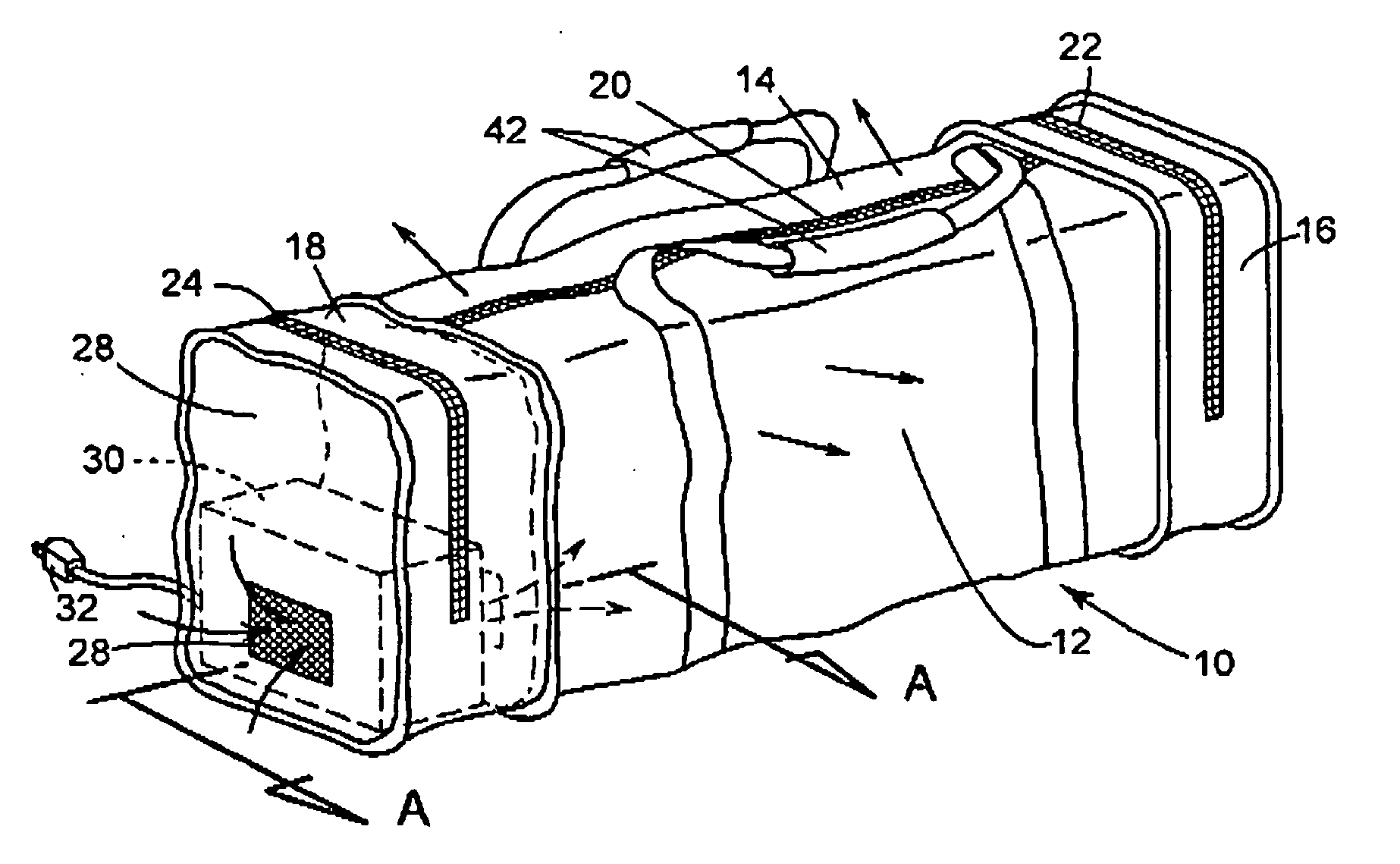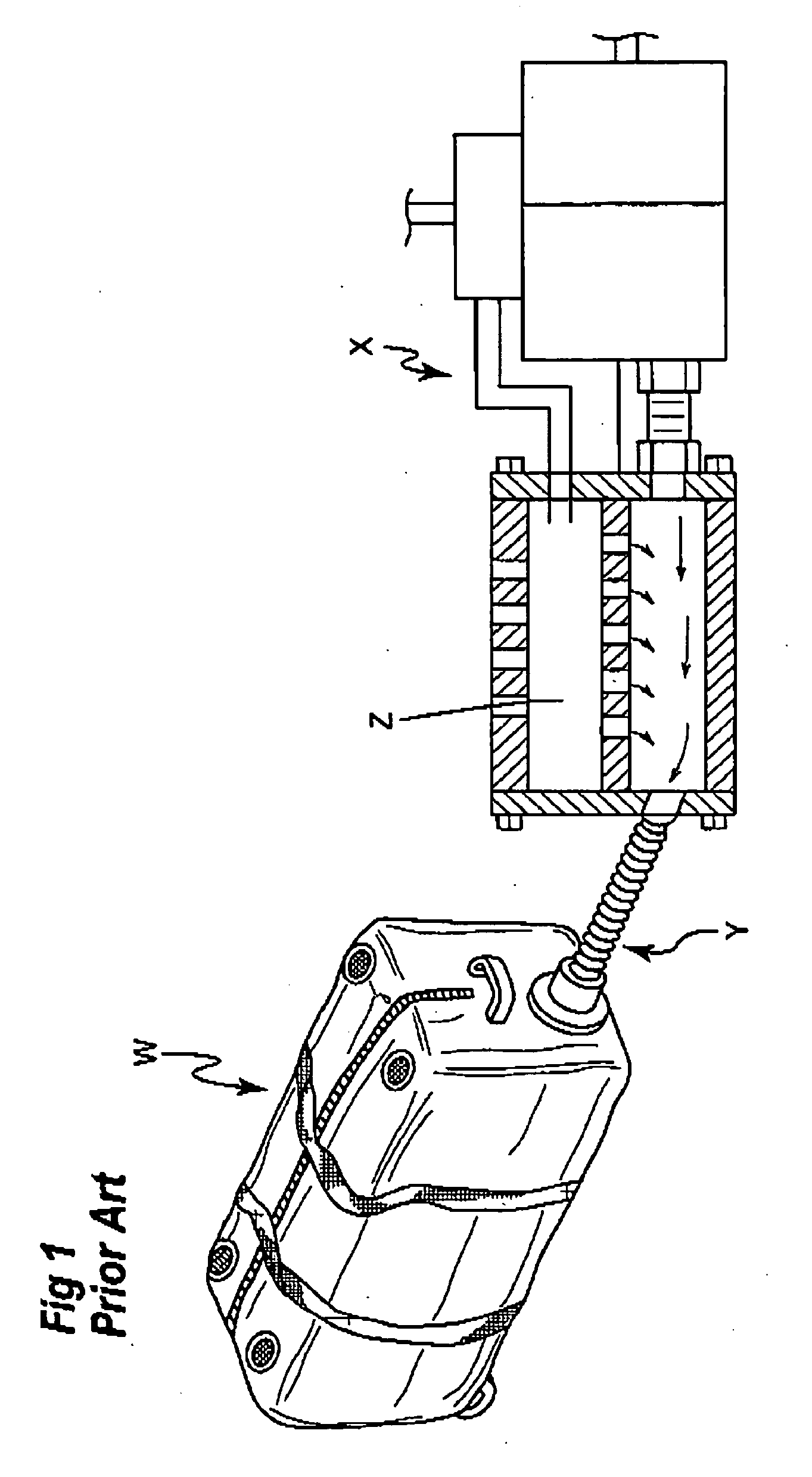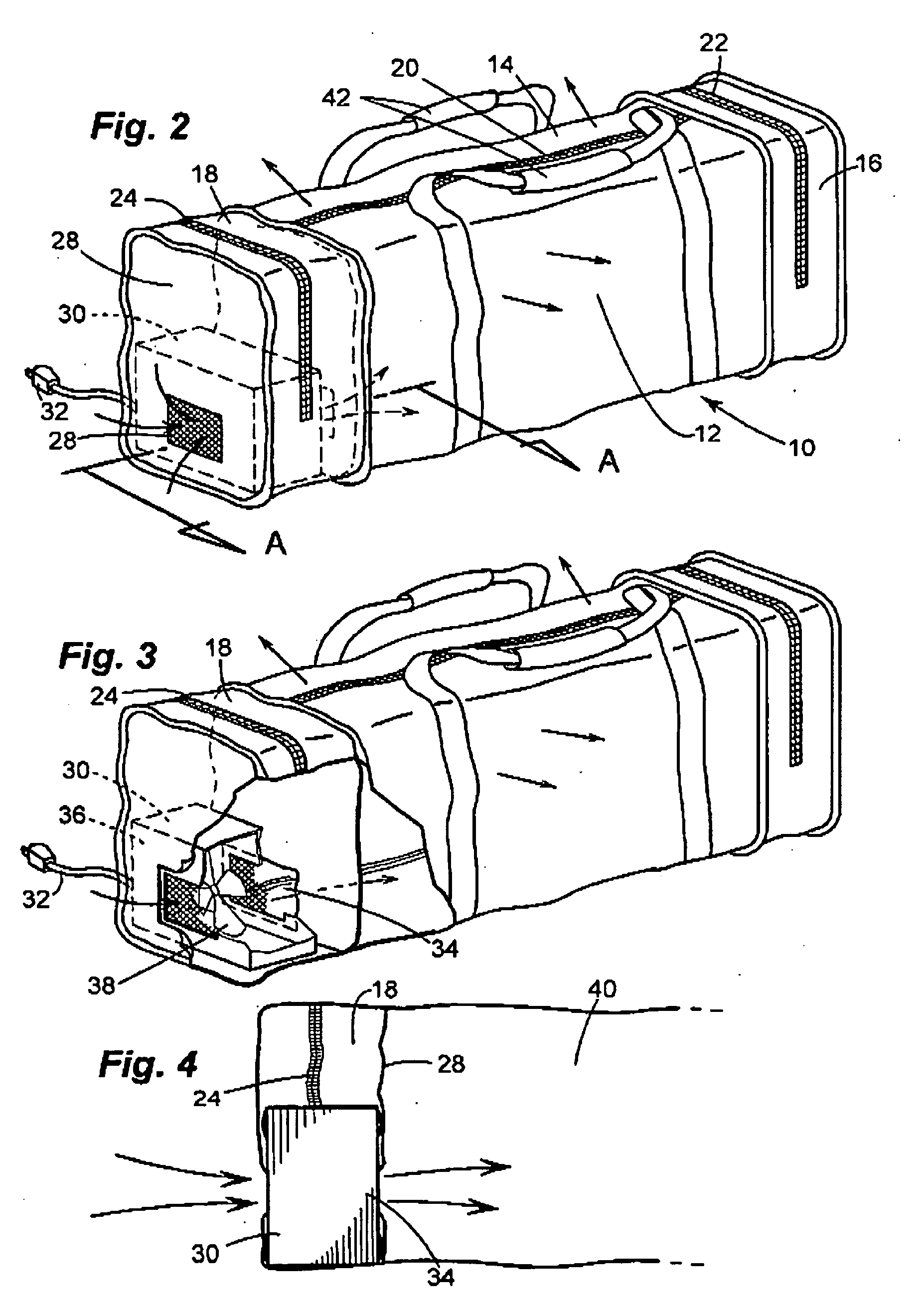Ozone deodorizing and disinfecting portable containers
- Summary
- Abstract
- Description
- Claims
- Application Information
AI Technical Summary
Benefits of technology
Problems solved by technology
Method used
Image
Examples
Embodiment Construction
[0038]The travel and sports bag 10, shown in FIG. 2, has a porous outer skin 12 constructed from a flexible canvas, plastic, vinyl or cloth material. Bag 10 may be used to store and carry, among other things, sports equipment, such as hockey, lacrosse, soccer, football and equestrian equipment. The equipment stored in bag 10 is typically placed in the bag after use in a moist, damp and usually wet condition as a result of the athlete's body sweat, the plain conditions (e.g., weather) and the plain surface (ice in the case of ice hockey, mud and equine perspiration in the case of equestrian events.
[0039]While bag 10 may be constructed with only a single inner compartment, it is preferred that the bag contain multiple compartments so that articles may be organized and stored more easily. As depicted in FIGS. 2 and 3, bag 10 has 3 compartments, 14, 16 and 18. Zippers 20, 22 and 24 facilitate easy access for the placing and removal of items stored in compartments 14, 16 and 18 respectiv...
PUM
 Login to View More
Login to View More Abstract
Description
Claims
Application Information
 Login to View More
Login to View More - R&D
- Intellectual Property
- Life Sciences
- Materials
- Tech Scout
- Unparalleled Data Quality
- Higher Quality Content
- 60% Fewer Hallucinations
Browse by: Latest US Patents, China's latest patents, Technical Efficacy Thesaurus, Application Domain, Technology Topic, Popular Technical Reports.
© 2025 PatSnap. All rights reserved.Legal|Privacy policy|Modern Slavery Act Transparency Statement|Sitemap|About US| Contact US: help@patsnap.com



